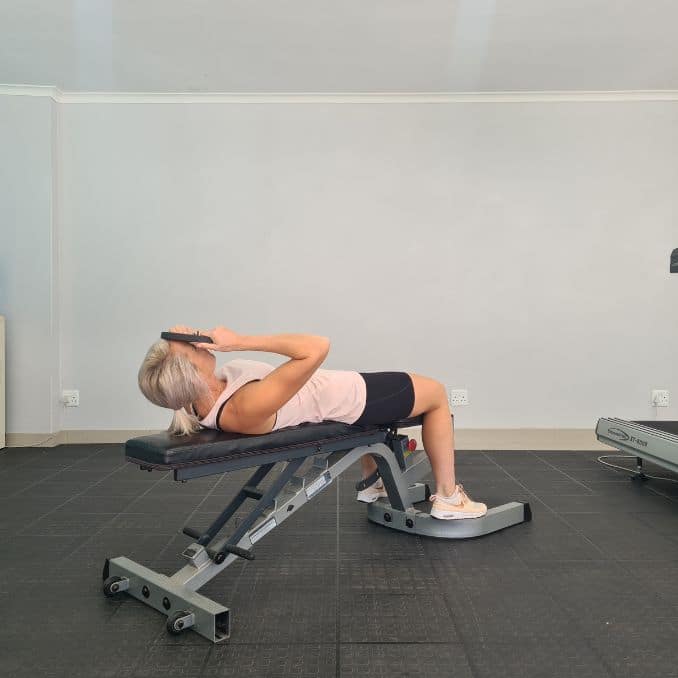
Neck pain is common, and one wants to get rid of it immediately. Neck pain usually happens when the neck and upper back muscles weaken, the head sags forward, and increased stress is placed on the cervical spine. Poor posture is also a factor, as it strains neck muscles. Osteoarthritis is another common cause of neck pain. But in general, neck pain is rarely a symptom of a severe problem. One of the ways to improve neck pain is by incorporating neck strengthening exercises. Strengthening these muscles can help improve posture and get the head closer to a neutral position (with the ears directly over the shoulders)
You can start these neck strengthening exercises as soon as possible, as long as your doctor gives you clearance. Starting off easily will help ease the neck stiffness because resting for a week or longer will make it harder to move again. But if your neck pain is severe, it is advisable not to exercise, and consulting your doctor is highly recommended.
Advanced Exercises for Neck Strengthening
Here are some of the exercises that can be done to help strengthen the neck
1. Lying Face Down Plate Neck Resistance
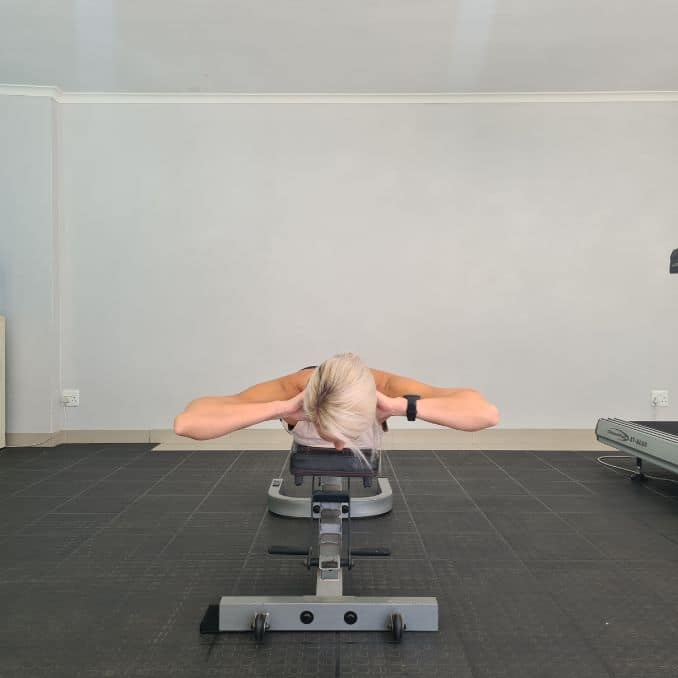 |
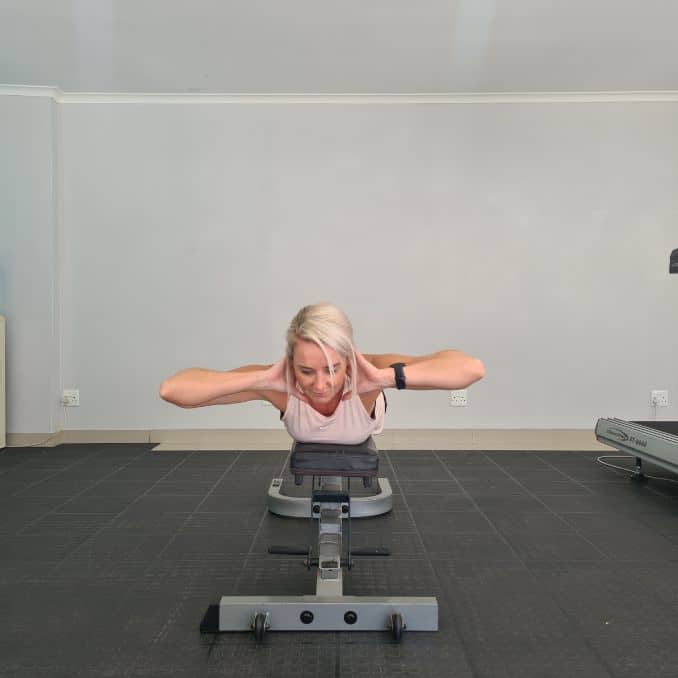 |
- Lie face down with your whole body on a flat bench while holding a weight plate behind your head.
Tip: You must position yourself so that your shoulders are slightly above the end of a flat bench for the upper chest, neck, and face to be off the bench. This will be your starting position.
- While keeping the plate secure on the back of your head, slowly lower your head (as in saying yes) as you breathe in.
- Raise your head back up to the starting position in a semi-circular motion as you breathe out. Hold the contraction for a second.
2. Lying Face-Up Plate Neck Resistance
- Face up with your whole body on a flat bench while holding a weight plate on your forehead.
Tip: You must position yourself so that your shoulders are slightly above the end of a flat bench for the traps, neck, and head to be off the bench. This will be your starting position.
- While keeping the plate secure on your forehead, slowly lower your head back semi-circularly as you breathe in.
- Raise your head back up to the starting position in a semi-circular motion as you breathe out. Hold the contraction for a second.
A. Dumbbell Shrug
 |
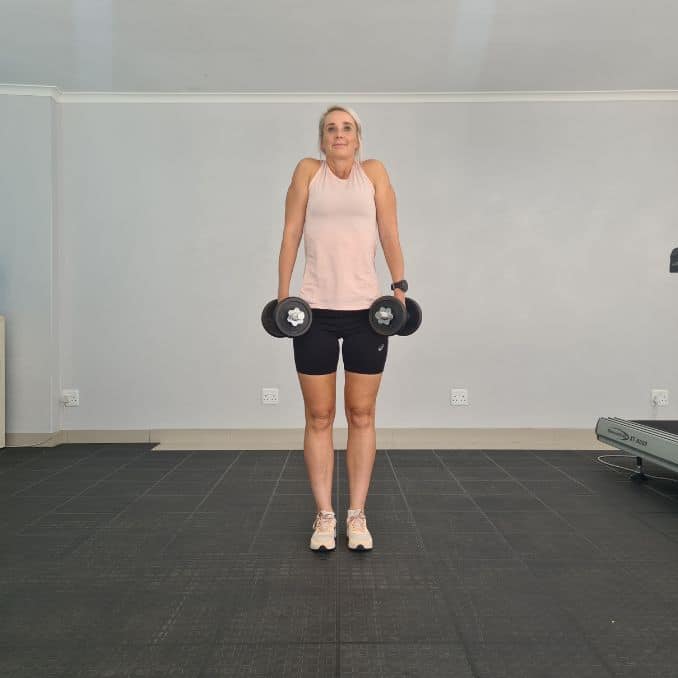 |
- Stand erect with a dumbbell on each hand (palms facing your torso); arms on the sides.
- Lift the dumbbells by elevating the shoulders as high as possible while you exhale. Hold the contraction at the top for a second. Tip: The arms should remain extended at all times.
- Refrain from using the biceps to help lift the dumbbells. Only the shoulders should be moving up and down.
- Lower the dumbbells back to the original position.
B. Barbell Shrug
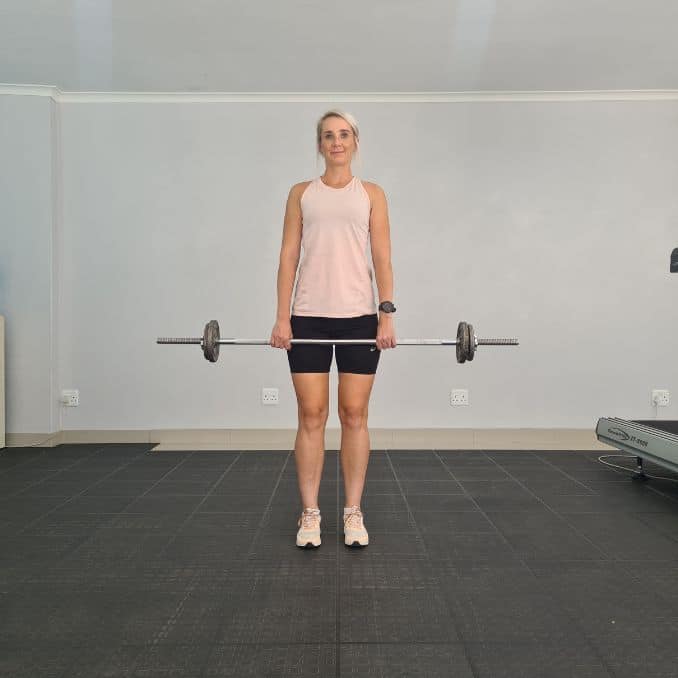 |
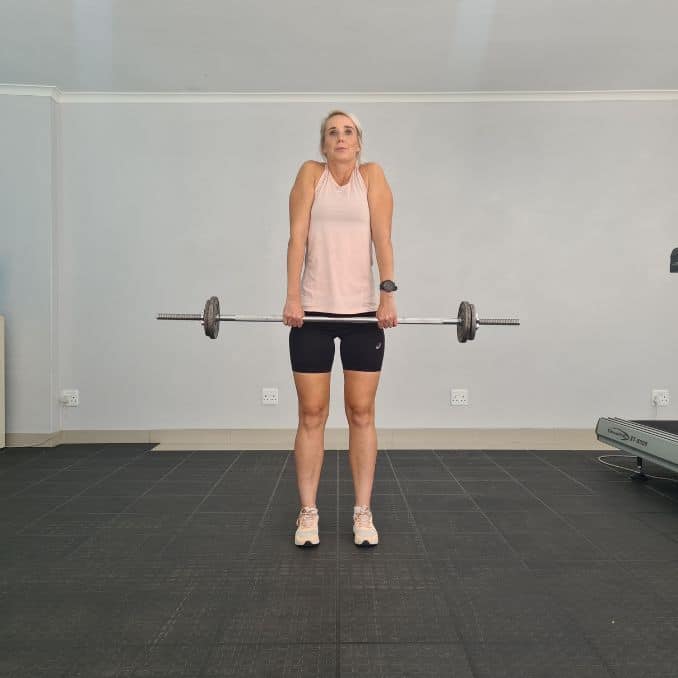 |
- Stand up straight with your feet at shoulder width as you hold a barbell with both hands in front of you using a pronounced grip (palms facing the thighs).
Tip: Your hands should be wider than shoulder-width apart. You can use wrist wraps for this exercise for a better grip. This will be your starting position.
- Raise your shoulders as far as you can as you breathe out and hold the contraction for a second. Tip: Refrain from trying to lift the barbell by using your biceps.
- Slowly return to the starting position as you breathe in.
When doing neck workouts, staying within your physical limits is advisable. This also goes for workouts and exercises for any muscle group, but neck injuries are among the worst and can cause the most inconvenience and pain.
Always start with adequate stretching before adding weighted resistance. Stretching your neck muscles will prepare your muscles for resistance and can alone strengthen your neck. They are also important to monitor your range of motion.
Keeping the Neck Pain away
Keep doing the neck strengthening exercises for 6-8 weeks, even if you stop hurting. This will help keep your neck pain from coming back. Work on your neck muscles like any other muscle. Stretches will help improve neck strength and range of motion. Another exercise that might help is the core exercises. Your core is your abdomen, back, and buttocks. If your core is strong and you’re holding your head upright as much as possible, your neck won’t have to work as hard.
As stated, neck pain is usually associated with poor posture with age-related wear and tear. To prevent neck pain, you should keep your head centered over your spine, and the following simple changes in your daily routine may help:
1. Good posture
For standing and sitting positions, your shoulders should be in a straight line over your hips, and your ears should be directly over your shoulders. When using cell phones, tablets, and other small screens, keep your head up and hold the device straight out rather than bending your neck to look down at the device.
2. The desk, chair, computer, and monitor should be at eye level.
Knees must be slightly lower than hips. Use your chair’s armrests.
3. Frequent breaks are needed.
For long-distance travel or working long hours, occasionally get up, move around, and stretch your neck and shoulders.
4. Avoid carrying heavy bags with straps over your shoulder
The weight can strain your neck.
5. Quit smoking
Smoking can increase the risk of developing neck pain.
6. Sleep in a healthy position
Your head and neck should be aligned with your body. Use a small pillow under your neck. Try sleeping on your back with your thighs elevated on pillows, which will flatten your spinal muscles.
7. Exercise
If you don’t move much, increase your activity level. Regular exercise is important to prevent neck pain and injury. A strengthening, stretching, and aerobic exercise program will improve your fitness. Research has shown that physically fit people are more resistant to injuries and pain and recover quicker when they have injuries than less physically fit people.
Neck pain can affect millions of people each year. Minor pain can be treated at home with ice, OTC pain relievers, and light stretching. While lifestyle adjustments can help reduce and prevent neck pain too. Take a break from your computer and phone, and be more mindful of your posture. Adjust your sleeping position, and try a new pillow if you are experiencing a consistent sore or stiff neck upon waking up.
Lastly, contact a doctor for worsening neck pain accompanied by other symptoms. This is especially important if you recently experienced an injury. Taking action as soon as you notice a problem can prevent the problem from worsening and help you develop preventive tactics.

